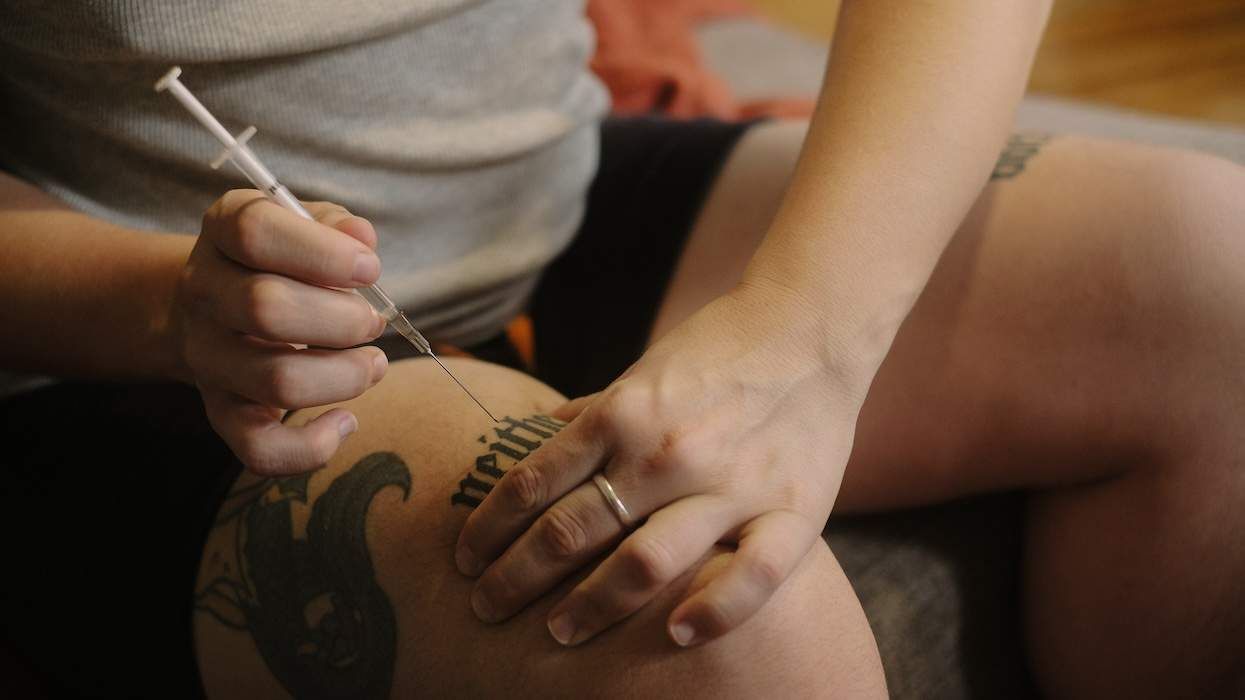CONTACTAbout UsCAREER OPPORTUNITIESADVERTISE WITH USPRIVACY POLICYPRIVACY PREFERENCESTERMS OF USELEGAL NOTICE
© 2025 Equal Entertainment LLC.
All Rights reserved
All Rights reserved
By continuing to use our site, you agree to our Privacy Policy and Terms of Use.
We need your help
Your support makes The Advocate's original LGBTQ+ reporting possible. Become a member today to help us continue this work.
Your support makes The Advocate's original LGBTQ+ reporting possible. Become a member today to help us continue this work.
Researchers in Sweden, the United Kingdom, Taiwan, and the United States report in the current edition of The Lancet that mammograms do reduce the risk of breast cancer among women, finding that women who get regular mammograms reduce their risk of dying from the disease by 28%. The study was the largest and most rigorous yet to investigate the survival benefits of routine breast mammograms, involving analysis of the health records of more than 210,000 Swedish women ages 20 to 69 over a 40-year period. "While mammography is largely accepted by the scientific and medical community as a benefit to women, there are still some who express doubts as to its value," said lead study author Stephen Duffy. "This study goes a long way toward silencing the dissenting voices." Mammograms can detect small tumors up to two years earlier than breast exams, providing more options for treatment. Recommendations that women have regular mammograms have been based on seven experiments conducted in the 1970s and 1980s that concluded the X-rays can cut deaths from breast cancer significantly. However, confidence in breast screening was shaken by Danish scientists in 2000 who reanalyzed the experiments and concluded that five were so flawed, it was impossible to tell if routine mammograms saved lives. Several expert panels also questioned the benefits of regular mammograms. In the latest study, researchers compared deaths from breast cancer diagnosed in the 20 years before mammogram screening was introduced with those diagnosed in the 20 years afterward. The X rays were introduced in 1977 and offered to all women over 40. The study found that among women who got regular mammograms, the risk of dying from breast cancer was reduced by 44% compared with the breast cancer death rate before mammograms became available. Women who refused mammograms after they became available still saw a 16% reduction in the chance of dying from disease due to factors other than mammography, such as better cancer treatments.
From our Sponsors
Most Popular
Bizarre Epstein files reference to Trump, Putin, and oral sex with ‘Bubba’ draws scrutiny in Congress
November 14 2025 4:08 PM
True
Jeffrey Epstein’s brother says the ‘Bubba’ mentioned in Trump oral sex email is not Bill Clinton
November 16 2025 9:15 AM
True
Watch Now: Pride Today
Latest Stories
There’s a testosterone crisis, the FDA says — for cisgender men
December 12 2025 4:59 PM
Budapest mayor could face charges for hosting LGBTQ+ Pride march
December 12 2025 4:13 PM
Jason Collins, first out gay NBA player, reveals he has 'deadliest form of brain cancer'
December 12 2025 2:09 PM
The Democratic candidate in the Texas Senate race is going to be an LGBTQ+ ally
December 12 2025 12:55 PM
Texas expands lawsuits against doctors accused of providing gender-affirming care to youth
December 11 2025 4:36 PM
How Sundance 2026 celebrates its queer legacy
December 11 2025 3:54 PM
George Santos’s exclusive D.C. Christmas party featured famous grifters & MAGA influence peddlers
December 11 2025 3:31 PM
Nancy Mace investigated for bad behavior at airport, blames transgender people
December 11 2025 1:11 PM
Pete Buttigieg mocks Trump Transportation Secretary Sean Duffy’s strange airport pull-up stunt
December 11 2025 1:00 PM
Appeals court mulls upholding ruling that struck down Pentagon’s HIV enlistment ban
December 11 2025 11:51 AM
Florida sues leading medical groups for supporting gender-affirming care
December 11 2025 11:02 AM
Behind Marjorie Taylor Greene's latest push to criminalize gender-affirming care
December 10 2025 9:09 PM
Queer actor Wenne Alton Davis, known for 'Maisel,' 'Normal Heart,' killed in NYC car crash
December 10 2025 5:14 PM
‘Proud’ pro-LGBTQ+ Democrat flips Republican state House seat in Georgia electoral upset
December 10 2025 4:05 PM
Texas city votes to overturn LGBTQ+ antidiscrimination protections
December 10 2025 4:03 PM
Pornhub's spicy stats prove just how horny 2025 was
December 10 2025 3:30 PM
'Heated Rivalry' stars thank WeHo gay bar for 'tweeting about our butts'
December 10 2025 2:55 PM



































































Charlie Kirk DID say stoning gay people was the 'perfect law' — and these other heinous quotes